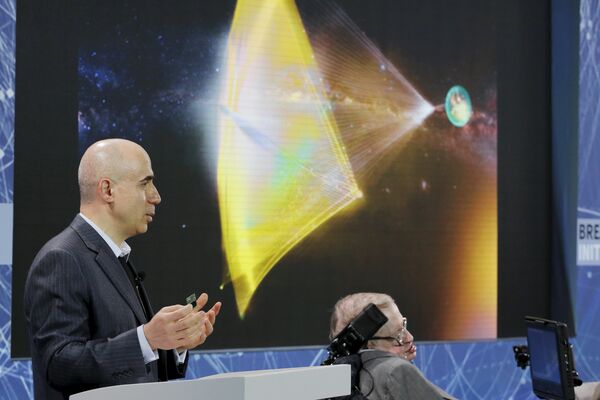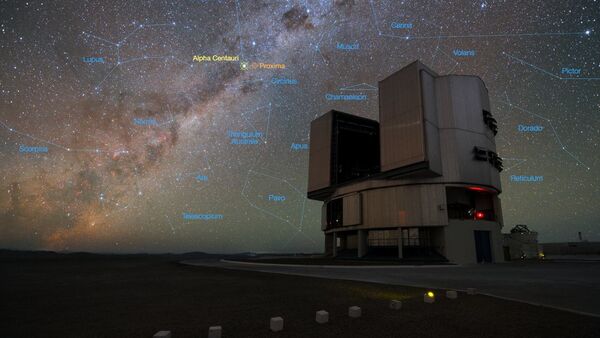Their proposal is intended to complement the Breakthrough Starshot project announced last year, which proposes using light-propelled nano spacecraft to reach Alpha Centauri in a journey of just 20 years.
The Alpha Centauri star system is 25 trillion kilometers (4.37 light years) away from Earth, and it would take today's fastest spacecraft at least 30,000 years to get there.
Breakthrough Starshot proposes transporting a tiny probe to Alpha Centauri at a speed of 20 percent the speed of light, using ultrathin, highly reflective one gram photon sails, powered by a 100 gigawatt array of lasers on Earth.
The probe will contain a wafer-thin chip carrying cameras, photon thrusters, power supply, navigation and communication equipment, enabling the space probe to capture images of possible planets and other scientific data.

Rather than typical means of space propulsion which use chemical processes, the method aims to propel aircraft through space by electromagnetic acceleration, which is only limited by the speed of light.
When the powerful laser array on Earth shines on the reflective surface of the Starshot probe's lightsail, the momentum carried by energized photons within the laser beam is supposed to propel the spacecraft forward.
However, Breakthrough Starshot have not yet come up with a way of slowing down the probe when it reaches its destination, giving its instruments time to examine the system's three stars and orbiting planets.
Writing in the Astrophysical Journal Letters, Rene Heller and Michael Hippke from Germany's Max Planck Institute for Solar System Research put forward a variation on the Breakthrough Starshot proposal which would make it decelerate.
Instead of a small laser-powered reflective photon sail, the spacecraft could use a much bigger, solar-powered light sail.
"The sail could be made of graphene, an extremely thin and light but mega-tough carbon film," Heller said in a press release.
To get sufficient thrust, a probe weighing less than 100 grams would need a light sail measuring 100,000 square meters, equivalent to 14 football pitches.
When it reaches the triple star system, the probe could decelerate by way of a swing-by-manoeuver that uses stellar radiation and gravitational pull to decelerate and maneuver past each of the three stars in the system.
Some theoretical trajectories of the probe offer the prospect of a round trip that could bring samples back to Earth.
"Our new mission concept could yield a high scientific return, but only the grandchildren of our grandchildren would receive it. Starshot, on the other hand, works on a timescale of decades and could be realized in one generation. So we might have identified a longterm, follow-up concept for Starshot."
Heller said that the researchers are in discussion with the Breakthrough Starshot team, with the aim of turning their theory into something that will work in practice.
"Many great visions in the history of mankind had to struggle with seemingly insurmountable hurdles."
"We are now approaching an age in which humans can leave their own star system and explore extrasolar planets using fly-by missions."





